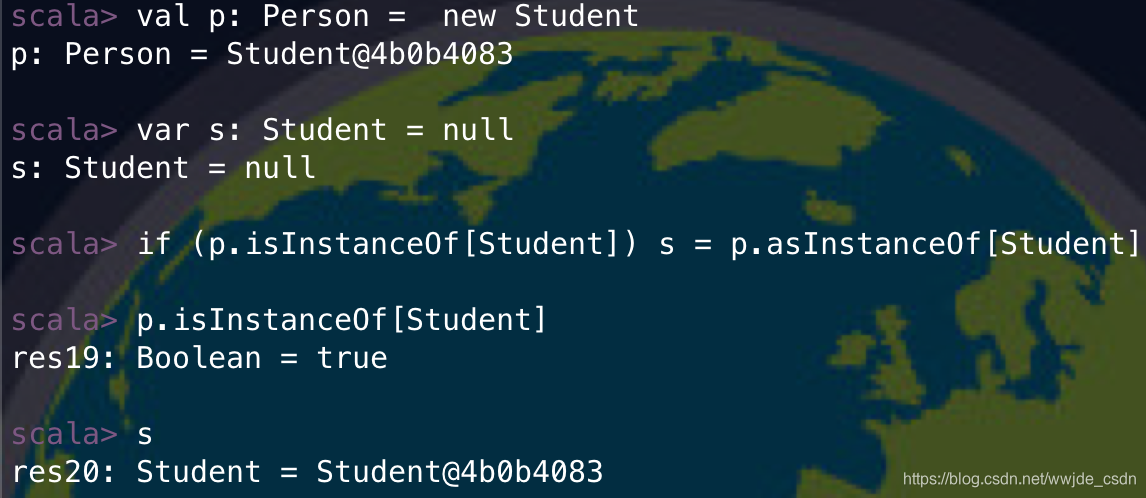标签:ESS null img 概念 int eof 不能 学习 程序
import scala.collection.mutable.ArrayBuffer
class Class {
class Student(val name: String) {} //此处为内部类
val students = new ArrayBuffer[Student]
def getStudent(name: String) = {
new Student(name)
}
}
val c1 = new Class
val s1 = c1.getStudent("0mifang")
c1.students += s1
val c2 = new Class
val s2 = c2.getStudent("0mifang1")
c1.students += s2 //错误的演示class Person {
private var name = "0mifang"
def getName = name
}
class Student extends Person {
private var score = "A"
def getScore = score
}
var student = new Student
student.getNameclass Person {
private var name = "0mifang"
def getName = name
}
class Student extends Person {
private var score = "A"
def getScore = score
override def getName = "Hi, I'm " + super.getName
}
var student = new Student
student.getName // 可以发现,student 类继承了 Person 类的 getName 方法子类可以覆盖父类的 val field,而且子类的 val field 还可以覆盖父类的 val field 的 getter 方法,只要在子类中使用 override 关键字即可
class Person {
val name: String = "Person"
def age: Int = 0
}
class Student extends Person {
override val name: String = "0mifang"
override val age: Int = 18
}
val person = new Person
val student = new Student
person.name
person.age
student.name
student.age如果我们创建了子类的对象,但是又将其赋予了父类类型的变量。则在后续的程序中,我们又需要将父类类型的变量转换为子类类型的变量,应该如何做?
首先,需要使用 isInstanceOf 判断对象是否是指定类的对象,如果是的话,则可以使用 asInstanceOf 将对象转换为指定类型。
class Person
class Student extends Person
val p: Person = new Student
var s: Student = null
// 如果 p 是 Student 类,则让 s 指向 p 转换为 Student 的对象
if (p.isInstanceOf[Student]) s = p.asInstanceOf[Student]
对象.getClass 可以精确获取对象的类,classOf[类] 可以精确获取类,然后使用 == 操作符即可判断。class Person
class Student extends Person
val p: Person = new Student
p.isInstanceOf[Person] //true
p.getClass == classOf[Person] //false
p.getClass == classOf[Student] //true

欢迎关注,本号将持续分享本人在编程路上的各种见闻。
标签:ESS null img 概念 int eof 不能 学习 程序
原文地址:https://www.cnblogs.com/Alex458/p/12228150.html